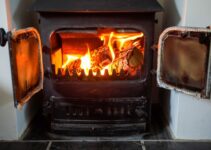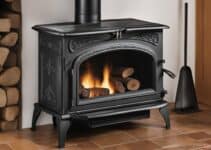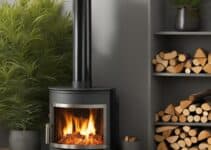Log burners come from an old tradition. They are the smaller descendant of the huge kitchen ranges of yesteryear. And while log burners may be used more for aesthetics than cooking these days, they can create enough ambience to make any house a home.
But when it’s bedtime or you need to distinguish your log burner in a hurry, it’s good to know the step you can take to make your log burner go out. We’ve got some ideas below that can help you extinguish your burner while maintaining the safety of your property and its occupants.
How to Extinguish a Log Burner
Maybe it’s the end of the evening and you’re starting to nod off. Or perhaps you’ve got an unexpected reason to leave your log burner unattended.
Either way, you need to know how to extinguish the fire inside your burner.
Before we start, it’s best to warn you that there’s no quick fix, especially if your log burner has a jolly flame dancing on plenty of fuel.
It will take a bit of time and effort to get a log burner to extinguish fully.
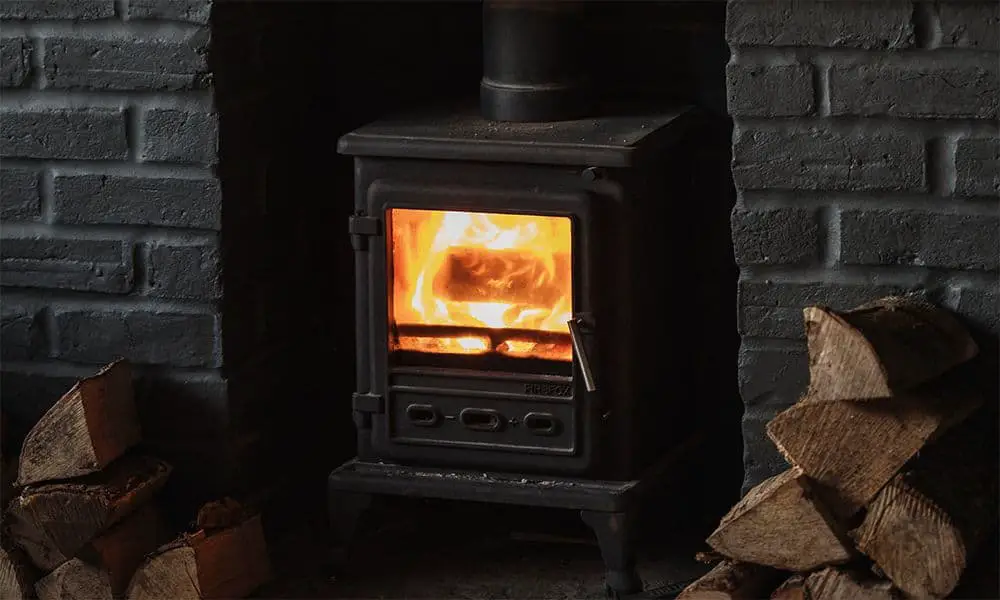
But using these tried and tested strategies may help. If you’ve got nothing urgent to do but you want to encourage your log burner to extinguish naturally but a bit quicker than normal, we’ve got a few tips to help:
Stop Adding Fuel
This is obvious, we know, but it’s worth repeating: if it’s late and you’re drowsy, don’t be tempted to put another log in the burner!
As pretty as it is, some logs can increase the burn time by hours and that’s the opposite of what you want. Let the existing wood in your firebox burn down naturally.
Open the Damper
By opening the damper or air vents on your log burner, you’ll allow more fresh air to enter the firebox. The increased oxygen will increase the rate of combustion and help the logs burn down much more quickly.
Close the Damper
If you shut the damper or air vents entirely, you cut off the flow of oxygen and interrupt the triangle of combustion. This means that your fire will go out quicker but the logs are unlikely to burn down fully.
Whatever emergency requires you to leave your home, remember that you don’t want to create another one by leaving your log burner unattended.
But if you’re in a rush, you can take steps to help your log burner go more quickly. These steps do involve opening the log burner door and managing the hot contents which can be dangerous.
So, make sure you only follow these tips if they align with your burner’s manufacturer’s safety guidelines.
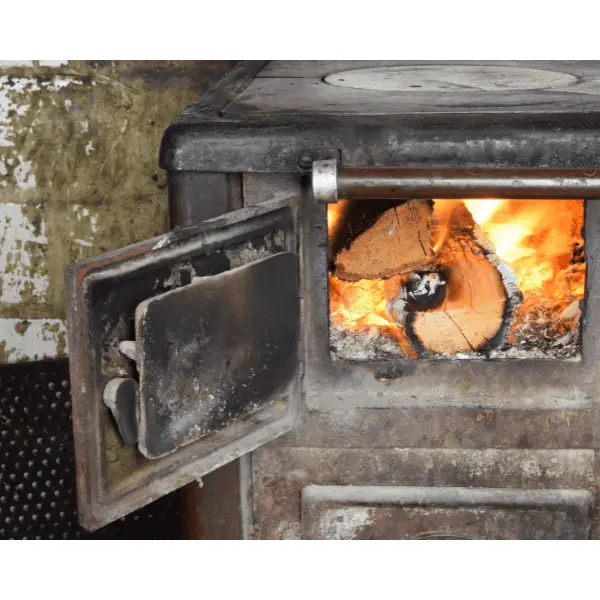
Make the Area Safe
Check the area around the log burner for any flammable materials such as paper, kindling, or firewood.
Removing these will minimise the risk of any sparks finding flammable material which could cause an accidental fire.
Separate the Logs or Embers
Put on your fire-resistant gloves and using your poker or tongs, spread the burning logs out inside the firebox. This will increase the surface area of each log.
If you open the air vents or damper fully after doing this, you’ll speed up the rate of burning and the subsequent cooling process.
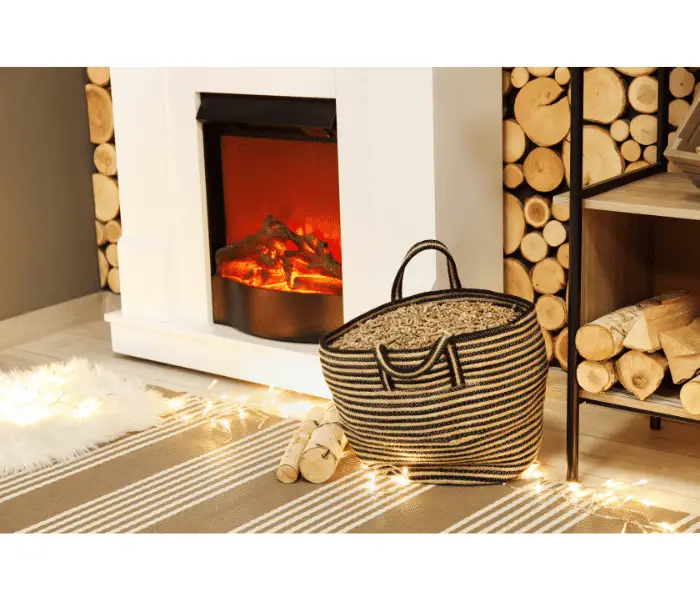
Additional Tips
Bicarbonate of soda: Some log burner owners suggest sprinkling a generous amount of bicarbonate of soda onto the burning logs will extinguish them quicker.
Sodium bicarbonate is one of the ingredients in fire extinguishers and so is a reasonable solution if you’re in a hurry to get your flames out.
Avoid large amounts of water: Some log burner users lightly spray water onto their logs to help extinguish the flames. This is a risky and messy option and may cause damage to the mechanisms of the burner.
After Care
Always check over your log burner to make sure it’s safe to leave.
Once the logs or ashes are cool, ensure all embers are out. If there are any still glowing, leave them in the firebox until they are all out or follow the suggestions about putting them out.
If there are no glowing embers you can remove the ash or logs from the log burner using a metal shovel or tongs.
Once the ashes or logs are removed, close the damper or air vents partially or fully.
It’s good to remember that while our suggestions may work for most log burners, it’s always best to follow the manufacturer’s instructions.
Can you Leave a Log Burner to Go Out?
If by ‘leave’ you mean ‘allow it to burn through naturally without interference’, the answer is: yes. If you mean ‘leave to go out unattended’, the answer is: no.
The idea of leaving your log burner unattended while it is still burning is tempting, isn’t it? It looks secure, so what could possibly go wrong?
The trouble is, there are lots of things that could go wrong with any device that aids combustion. And that’s why it’s not recommended to leave a log burner unattended at any point. Here are just a few of those reasons:
- You’re not there to manage accidental ignition which can spread to flammable objects close by.
- You’re not there to monitor if a burner, chimney, or surrounding structure is overheating.
- Combustion causes carbon monoxide which is a toxic gas that can pose a significant risk to your household. The risk of carbon monoxide poisoning is heightened when You’re not there to monitor the fire’s airflow or its working mechanisms.
Even if you think it’s safe to leave the room for extended periods or go to bed, it’s best to let the log burner die down naturally before you go.
Safety should always be a top priority when dealing with fire-related appliances.
How Long Does it Take for a Log Burner to Go Out?
The time it takes for a log burner to go out can vary enormously. Here are some factors that can affect the burning time:
- the size of the fire
- the type and amount of fuel used – softwoods generally burn quicker than hardwoods.
- the ventilation in the room and airflow into the firebox
- the design and size of the log burner
As a rule of thumb, though, it can take anywhere from 1 to 4 hours for a log burner to go out completely.
Can I use Water to Put Out a Fire in a Log Burner?
Even though some people suggest a spritz of water on burning logs can help extinguish flames and embers quicker, in a log burner it’s the least safe and most messy option.
Log burners, wood-burning stoves or fireplaces, are designed to handle high temperatures and contain the fire safely within the unit.
Introducing water to a log burner can cause several issues.
It’s obvious that adding water to any combustible material could cause an explosive reaction leading to potential injury or cause extensive material damage to your home.
It could also crack or shatter the glass or brick elements on your burner or even damage the metal frame. It might even dislodge bricks in your chimney or damage the flue.
Log burners are a delightful addition to any home and they can be a feature of your property for years to come. But it’s always crucial to be cautious when dealing with fires.
If your log burner is monitored at all times, it will make for a happier and safer home.
